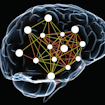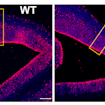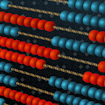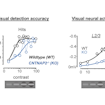SFARI Investigator Bruce Herring and colleagues showed that ASD-linked mutations in Trio and NLGN1 cause deficits in synapse development and function.
Research Highlights
Hisashi Umemori and colleagues showed that X-inactivation-based patchy expression of PCDH19 causes defects in presynaptic development and signaling in the mouse hippocampus, affecting memory processes.
Bence Ölveczky, Jesse Marshall and colleagues developed a new method, CAPTURE, for long-term behavioral tracking in rodents and demonstrate its utility in tracking behaviors in Fmr1-KO rats.

Olga Troyanskaya and colleagues developed a bioinformatics framework for the identification and prioritization of disease-associated enhancers.
Simon Chen and colleagues found that a reduction in locus-coeruleus noradrenaline neuromodulatory signaling contributes to altered motor learning in 16p11.2 deletion mice.

Lilia Iakoucheva and colleagues found that mice lacking a copy of the high-confidence ASD risk gene Cul3 have reduced brain volumes, potentially due to defects in Rho signaling during brain development.

Melissa Gymrek and colleagues developed a framework for the identification and prioritization of de novo mutations at tandem repeats on a genome-wide scale and assessed their contribution to autism risk.

Bilal Haider and colleagues found that Cntnap2 knockout mice exhibited deficits in visual perception and that these were associated with diminished excitation and elevated inhibition in the visual cortex.
Jun Huh and colleagues found that maternal immune responses to infection may at least partially explain sex-specific differences in autism risk.

Michael Platt and colleagues found that monkeys create complex internal representations of social situations and uncovered neural circuitry supporting social cooperation.
- Previous Page
- Viewing
- Next Page